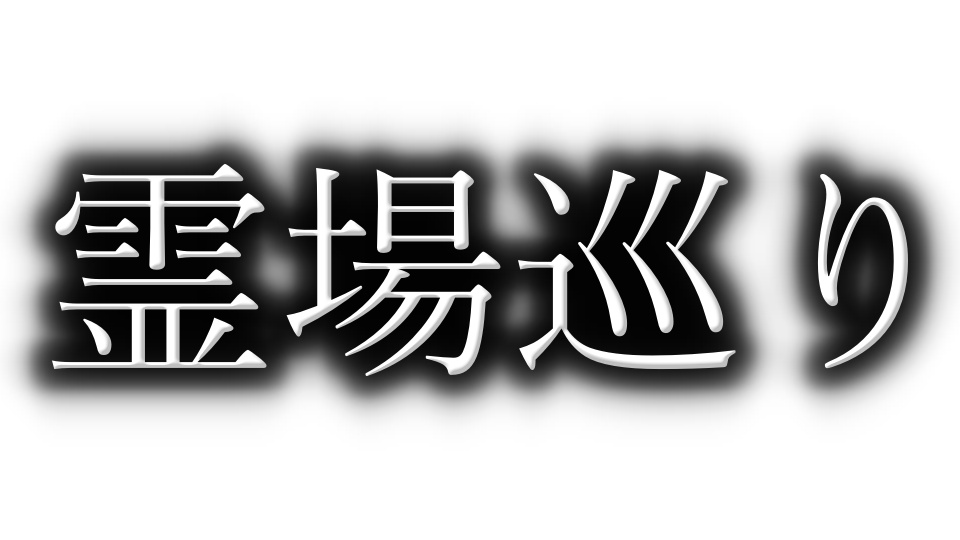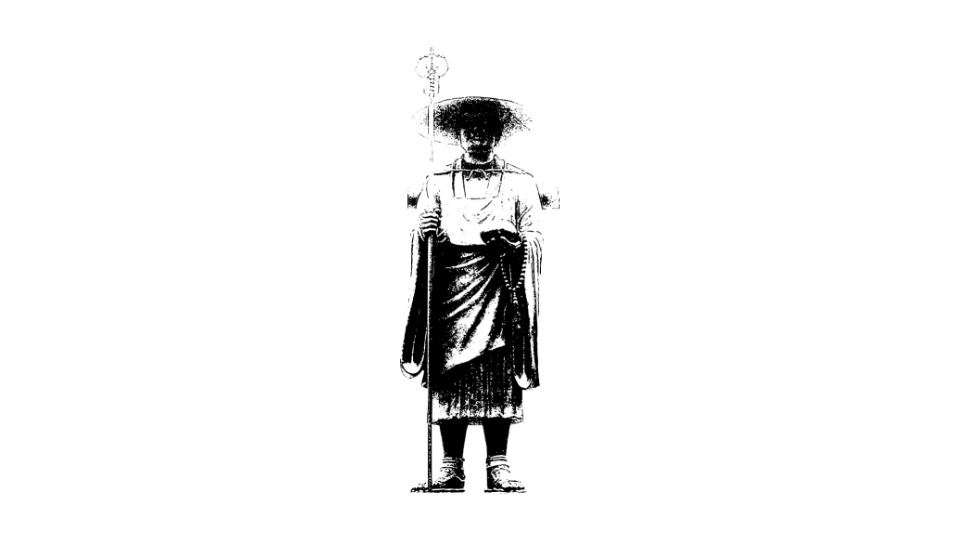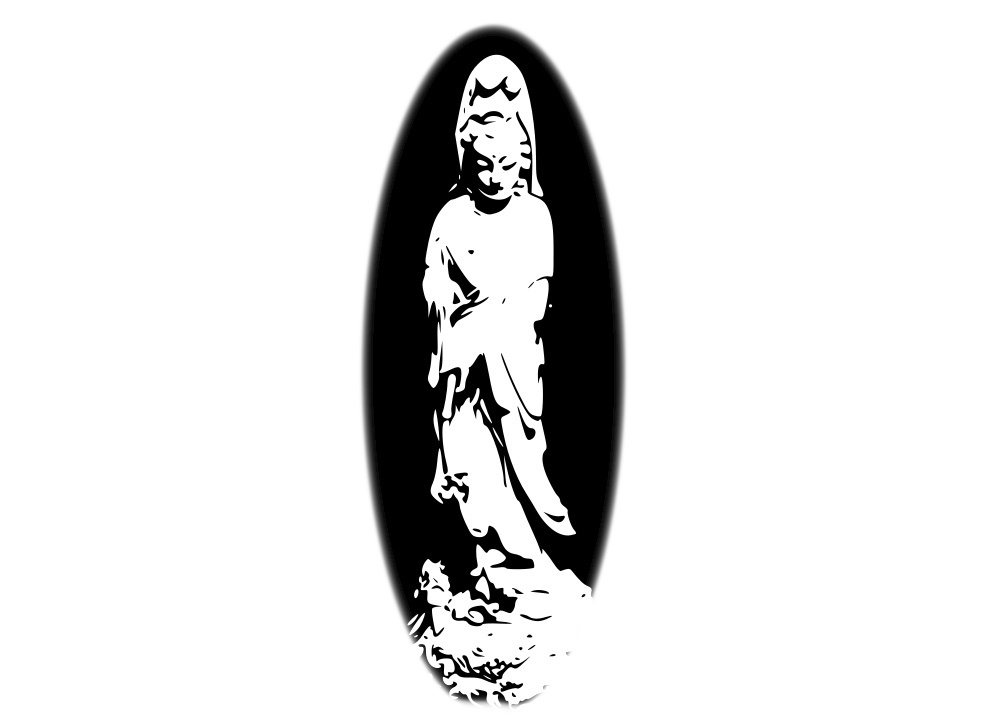御朱印の起源
御朱印の起源は、仏教的には、六十六部廻国聖の「納経請取状(のうきょう うけとりじょう)」と言われています。 四国八十八ヶ所に関する最古の納経帳として知られているのは、空性法師の宝永8年(1711年)から正徳元年(1712年)にかけてのもので、 これは六十六部の巡礼の一環として四国・西国を巡拝したものです。他の18世紀前半の納経帳も全て六十六部のもので、四国巡礼や西国巡礼の巡礼者の納経帳は18世紀後半からです。 18世紀になると1ヶ国1ヶ所にこだわらず、四国・西国・板東・秩父などの霊場を含むようになりました。
六十六部廻国聖とは
法華経を66部写経し、五畿七道は68ヶ国ですが、六十六部は壱岐国、対馬国を除いた66ヶ国を巡り、それぞれの国を代表する神社または寺院に法華経を奉納するという修行者の事です。
御朱印の普及と変遷
納経の習慣は次第に一般にも広がり、やがて納経をせず参拝のみをした場合にも証明として「納経受取の書付」をもらうように変化しました。
近代以降の御朱印
鉄道網が整備された明治以降、巡拝旅行と集印が盛んになり、昭和10年頃から「御朱印」という呼称が見られるようになりました。御朱印帳は敬神の思いの結晶であり、参拝の感動を永久に保存する掛替えのない存在です。
御朱印の意味
御朱印はもともと写経を奉納した証であり、魔除けの朱色と墨の文字がセットになった、ご本尊やご神体の分身と考えられています。
御朱印を頂く場所
お寺の場合は納経所・寺務所などで、神社の場合は社務所・授与所で頂きます。
一部寺社においては、寺と神社の朱印が混在している場合は断られる場合がある。
御朱印の構成要素
1.奉拝(ほうはい) - 右上に書かれる
2.日付 - 左端に記載
3.社名印(しゃめいいん) - 真ん中の印
4.神紋 - 社名印以外の印
御朱印はその歴史や意味から、ただの記念品ではなく、深い宗教的な意義を持つものです。
About "red seals" that are received as proof of visit to a shrine.
Origin of the red seal
The origin of the red seal, in Buddhist terms, is said to be the “nokyo uketorijyo” (nokyo uketorijyo) of the 66 priests who visited the 88 temples of Shikoku. The earliest known nokyo-keijo (seal book) on the 88 temples of Shikoku dates from 1711 to 1712, and is attributed to Kusei H?shi, who made a pilgrimage to Shikoku and the western part of Japan as part of his pilgrimage to the 66 temples. All other early 18th-century nokkyobo are also from the 66 sections, and the nokkyobo for pilgrims to Shikoku and Saigoku began in the latter half of the 18th century. In the 18th century, they began to include sacred sites in Shikoku, Saigoku, Bando, Chichibu, etc., rather than sticking to one site in one country.
What is the 66-part Kaikoku Sei?
A practitioner who has copied 66 parts of the Lotus Sutra, and while the Ginki 7-do is 68 countries, the 66 parts are 66 countries excluding Iki and Tsushima provinces, and who dedicates the Lotus Sutra at a representative shrine or temple in each of these countries.
The Spread and Transition of Goshuin
The practice gradually spread to the general public, and eventually it became common to receive a “Nokyo Receipt Certificate” as proof of one's dedication, even if one only visited a shrine or temple without paying a visit to the shrine or temple.
Red Seal in the Modern Era
After the Meiji period (1868-1912), when the railroad network was developed, pilgrimage tours and the collection of red seals became popular, and the term “Goshuin” began to be used around the 10th year of the Showa period. Goshuin books are the crystallization of the thoughts and feelings of reverence and are irreplaceable objects that preserve the impression of worship forever.
Meaning of Goshuin
Goshuin” is a seal that is a symbol of dedication to sutra chanting, and is considered to be an alter ego of the main deity and the deity's body, with vermilion and black ink characters to ward off evil spirits.
Where to receive a red seal
At temples, red seals can be obtained at the sutra office or temple office, while at shrines, red seals can be obtained at the shrine office or awarding office. At some temples and shrines, red seals for both temples and shrines may be refused if they are mixed.
Components of a red seal
Because of their history and meaning, red seals are not mere mementos, but have deep religious significance.
- Hohai - written in the upper right corner
- Date - written on the far left
- Company name seal - written in the middle
- kamon - a seal other than the company's name seal.


四国八十八ヶ所霊場(しこくはちじゅうはっかしょれいじょう)は、日本の四国地方に位置する88箇所の仏教寺院を巡礼する霊場のことです。 この巡礼は、弘法大師(空海)に関連するとされ、平安時代から行われてきました。巡礼者は「お遍路さん」と呼ばれ、歩いて巡ることが伝統的とされていますが、 現代では車やバスなどを利用することも一般的です。
巡礼の歴史と意義
昔から、都から遠く離れた四国は辺地(へじ・へぢ)と呼ばれるほど国の中心地から遠く離れた地であり、様々な修行の場でありました。 讃岐でご生誕されたお大師さま(弘法大師・空海)もたびたびこの地でご修行をされ、八十八ヶ所の寺院などを選び四国八十八ヶ所霊場を開創されたと伝えられております。 そのため、各霊場は弘法大師の足跡や修行の痕跡を辿る場所として信仰されています。
巡礼の方法
参拝順序:伝統的には徳島県の霊場から始め、時計回りに巡る方法が一般的です。ただし、逆回り(逆打ち)や順不同での参拝も許されています。
装備:巡礼者は白衣や金剛杖、菅笠などの伝統的な装備を身につけることが多いです。また、各寺院で「納経帳」に御朱印をもらうことが習慣となっています。
移動手段:徒歩、バス、車、電車など、様々な方法で巡礼することができます。特に徒歩で巡る場合は、全行程が約1400キロメートルに及び、約40日から60日かかるとされています。
霊場の構成
霊場は四国の4つの県(徳島県、香川県、愛媛県、高知県)にまたがり、それぞれの県に22箇所ずつの寺院が配置されています。各寺院は、それぞれ独自の歴史と信仰の対象を持っており、巡礼者は寺ごとに異なるご利益を求めて参拝します。
霊場の主な寺院
霊山寺(りょうぜんじ):第1番札所(徳島県)
金剛福寺(こんごうふくじ):第38番札所(高知県)
善通寺(ぜんつうじ):第75番札所(香川県)
太山寺(たいさんじ):第52番札所(愛媛県)
巡礼の意義
四国八十八ヶ所巡礼は、精神的な修行や心の浄化を目的としています。また、困難を乗り越えることで得られる達成感や自己成長も重要な要素です。 さらに、地域の人々との交流や四国の自然・文化を体験することも大きな魅力となっています。
現代の巡礼
近年では、健康志向やスピリチュアルな理由から巡礼を行う人々も増えています。また、インターネットやガイドブックを利用した情報収集が容易になったため、 外国人巡礼者も増加しています。四国八十八ヶ所霊場は、日本国内外で広く知られる巡礼地となっています。
観光としての四国遍路
四国遍路は、(徳島県、香川県、愛媛県、高知県)から成る地域で、信仰の旅であると同時に、巡礼を通じて、四国の豊かな自然や文化、食を楽しむ絶好の機会です。
徳島県
〇鳴門の渦潮: 鳴門海峡で見られる世界最大級の渦潮。観潮船や渦の道(海上遊歩道)から観察できます。
〇阿波おどり会館: 徳島市にある施設で、阿波踊りの歴史や文化を学び、実際の踊りを見ることができます。
〇祖谷渓(いやけい): 美しい渓谷で、祖谷のかずら橋や小便小僧像などが見どころ。大自然の中でのトレッキングが楽しめます。
香川県
〇金刀比羅宮(こんぴらぐう): 「こんぴらさん」として親しまれる神社で、長い石段を登ると絶景が広がります。
〇栗林公園: 高松市にある日本庭園で、国の特別名勝に指定されています。四季折々の風景が楽しめます。
〇直島: 瀬戸内海に浮かぶ島で、現代アートの聖地。草間彌生のカボチャやベネッセハウスミュージアムなどが有名です。
愛媛県
〇道後温泉: 松山市にある日本最古の温泉の一つ。歴史的な建物と温泉街の雰囲気が魅力です。
〇松山城: 松山市にある城で、天守閣から市内を一望できます。夜にはライトアップも楽しめます。
〇しまなみ海道: 自転車愛好家に人気のサイクリングコース。瀬戸内海の美しい風景を楽しみながら島々を渡ることができます。
高知県
〇桂浜: 高知市にある美しい砂浜で、坂本龍馬像も有名。太平洋を一望できます。
〇高知城: 高知市にある城で、江戸時代の姿をほぼそのまま残しています。天守閣からの景色も見どころです。
〇四万十川: 日本最後の清流とも称される美しい川で、カヌーや川下りが楽しめます。周辺には温泉や美しい自然が広がっています。
その他のおすすめスポット
〇大塚国際美術館(徳島県): 世界の名画を陶板で再現したユニークな美術館。
〇高松港(香川県): 瀬戸内海の島々への玄関口。フェリーで島巡りが楽しめます。
〇内子町(愛媛県): 江戸時代から明治時代の歴史的建造物が残る町並み。
〇室戸岬(高知県): 太平洋に突き出した岬で、雄大な景観と地質学的な見どころが多い。
■便利な情報
宿泊施設: 遍路道沿いには、遍路宿(お遍路さん専用の宿泊施設)や、一般の旅館・ホテルがあります。最近では、外国人観光客向けのゲストハウスも増えています。
交通機関: 四国遍路は徒歩で巡る以外にも、バスツアーやレンタカーを利用することができます。公共交通機関も充実しており、特に主要な寺院間はアクセスが良いです。
ガイドブックとアプリ: 四国遍路のためのガイドブックや地図、スマートフォン用のアプリがあり、ルートや宿泊情報、観光スポットなどを簡単に確認できます。
Pilgrimage to the 88 Sacred Sites of Shikoku (Pilgrimage)
Shikoku 88 Sacred Sites is a pilgrimage site that visits 88 Buddhist temples located in the Shikoku region of Japan. This pilgrimage is said to be related to Kobo Daishi (Kukai) and has been carried out since the Heian period. Pilgrims are called ``henro-san,'' and traditionally they travel on foot, but nowadays it is also common to use cars or buses.
History and significance of pilgrimage
Since ancient times, Shikoku, far from the capital, has been called “heji,” or “remote area,” meaning far from the center of the country, and was a place for various kinds of ascetic practices. It is said that Kobodaishi (Kobo Daishi/Kukai), who was born in Sanuki, often practiced asceticism in this area and selected 88 temples to establish the 88 sacred sites of Shikoku. Therefore, each sacred site is believed to be a place where the footprints of Kobo-Daishi and the traces of his ascetic practices can be traced.
Order of worship: Traditionally, it is common to start at the sacred sites in Tokushima Prefecture and go clockwise. However, it is also permissible to visit the temples in the wrong order.
Equipment: Pilgrims often wear traditional equipment such as white robes, vajra staffs, and sedge hats. It is also customary to receive a goshuin (shuin) stamp in the ``Nokyocho'' at each temple.
Transportation: There are many ways to make the pilgrimage, including walking, bus, car, and train. The entire journey is approximately 1,400 kilometers and is said to take approximately 40 to 60 days, especially if you choose to explore on foot.
Composition of sacred place
The sacred sites span four prefectures in Shikoku (Tokushima, Kagawa, Ehime, and Kochi), and each prefecture has 22 temples. Each temple has its own history and beliefs, and pilgrims visit each temple to seek different blessings.
Main temples in the sacred place
Ryozenji Temple: No. 1 temple (Tokushima Prefecture)
Kongofukuji Temple: No. 38 Temple (Kochi Prefecture)
Zentsuji Temple: No. 75 Temple (Kagawa Prefecture)
Daisenji Temple: No. 52 Temple (Ehime Prefecture)
The significance of pilgrimage
The purpose of the Shikoku 88-site pilgrimage is spiritual training and purification of the mind. Also important are the sense of accomplishment and self-growth that comes from overcoming difficulties. Furthermore, interacting with local people and experiencing Shikoku's nature and culture are also great attractions.
modern pilgrimage
In recent years, an increasing number of people are making pilgrimages for health-conscious and spiritual reasons. Additionally, the number of foreign pilgrims is increasing as it has become easier to gather information using the internet and guidebooks. The 88 Sacred Sites of Shikoku are widely known pilgrimage sites both in Japan and abroad.
Shikoku pilgrimage as tourism
The Shikoku Pilgrimage is a journey of faith in the region consisting of (Tokushima Prefecture, Kagawa Prefecture, Ehime Prefecture, and Kochi Prefecture), and at the same time is a great opportunity to enjoy Shikoku's rich nature, culture, and food through pilgrimage.
Tokushima
〇Naruto whirlpools: The world's largest whirlpools can be seen in the Naruto Strait. You can observe it from a sightseeing boat or from the Uzu-no-michi (marine promenade).
〇Awa Odori Hall: A facility located in Tokushima City where you can learn about the history and culture of Awa Odori and see the actual dance.
〇Iyakei: A beautiful valley with highlights such as the Iya Kazura Bridge and the Manneken Pis statue. You can enjoy trekking in the great outdoors.
Kagawa Prefecture
〇Konpiragu Shrine: This shrine is affectionately known as ``Konpira-san,'' and if you climb the long stone steps, you'll see a spectacular view.
〇Ritsurin Garden: A Japanese garden in Takamatsu City that has been designated as a special scenic spot by the country. You can enjoy the scenery of each season.
〇Naoshima: An island in the Seto Inland Sea, it is a sacred place for contemporary art. It is famous for Yayoi Kusama's pumpkins and the Benesse House Museum.
Ehime Prefecture
〇Dogo Onsen: One of the oldest hot springs in Japan, located in Matsuyama City. The historic buildings and the atmosphere of a hot spring town are attractive.
〇Matsuyama Castle: A castle in Matsuyama City, where you can see a panoramic view of the city from the castle tower. You can also enjoy it lit up at night.
〇Shimanami Kaido: A popular cycling course among bicycle enthusiasts. You can cross the islands while enjoying the beautiful scenery of the Seto Inland Sea.
Kochi Prefecture
〇Katsurahama: A beautiful sandy beach in Kochi City, also famous for the Sakamoto Ryoma statue. You can see the Pacific Ocean.
〇Kochi Castle: A castle in Kochi City that has remained almost exactly as it was in the Edo period. The view from the castle tower is also a highlight.
〇Shimanto River: This beautiful river is said to be the last clear stream in Japan, and you can enjoy canoeing and river rafting. There are hot springs and beautiful nature in the surrounding area.
Other recommended spots
〇Otsuka Museum of Art (Tokushima Prefecture): A unique art museum that reproduces famous paintings from around the world on ceramic plates.
〇Takamatsu Port (Kagawa Prefecture): Gateway to the islands of the Seto Inland Sea. You can enjoy island hopping by ferry.
〇Uchiko Town (Ehime Prefecture): A townscape where historical buildings from the Edo period to the Meiji period remain.
〇 Cape Muroto (Kochi Prefecture): A cape that juts out into the Pacific Ocean, it has a magnificent landscape and many geological attractions.
■Useful information
Accommodations: Along the pilgrimage route, there are pilgrim inns (accommodations exclusively for pilgrims) as well as general inns and hotels. Recently, the number of guesthouses for foreign tourists is increasing.
Transportation: In addition to walking the Shikoku Pilgrimage, you can also take bus tours or rent a car. Public transportation is also available, and access to major temples is particularly good.
Guidebooks and Apps: There are guidebooks, maps, and smartphone apps for the Shikoku Pilgrimage, allowing you to easily check routes, accommodation information, sightseeing spots, and more.
御府内八十八箇所(ごふないはちじゅうはちかしょ)とは、四国八十八箇所の霊場巡りを模倣したもので、宝暦5年(1755)頃、多聞院に墓のある正等和尚(1703-1774)が開創したと伝えられます。 江戸市中およびその近郊にある88の寺院を巡る形式で設定されました。八十八ヶ所のお寺にそれぞれの四国霊場の土を置くことで、遠い四国まで行かなくても、1番から88番までの御府内霊場をめぐれば、四国を巡礼したと同じご利益がえられると伝えられています。 高齢者や病気のために遠方への旅行が難しい人々にとっては、身近で信仰を深める機会となりました。また、江戸時代において日常の中で信仰を実践する一つの手段となりました。 現代でも、御府内八十八箇所は多くの人々に親しまれています。東京都内の88箇所の寺院を巡ることで、歴史や文化、宗教的な意味を感じることができる重要な存在となっています。
The Gofunai Hachijuhachikasho is an imitation of the Shikoku 88 sacred places tour, and was founded around 1755 by the monk Shodo (1703-1774), whose tomb is located in Tamonin Temple. The tour was set up in the form of a tour of 88 temples in and around Edo City. It is said that by placing a piece of soil from each of the 88 sacred sites at each temple, visitors can receive the same benefits as those who have made a pilgrimage to Shikoku by visiting the 88 sacred sites from No. 1 to 88 without having to travel to distant Shikoku. For the elderly and those who were unable to travel to distant places due to illness, this was an opportunity to deepen their faith in a familiar setting. In the Edo period (1603-1867), it also became a means of practicing faith in daily life. Even today, many people are familiar with the 88 temples in Gofuuchi. Visiting the 88 temples in Tokyo is an important way to experience the history, culture, and religious significance of the 88 temples.
観光としての御府内八十八箇所巡礼
四国八十八箇所と同様に、お遍路さんの巡礼コースとして人気です。
「港区エリア」
東京別院(港区高輪):高野山真言宗御府内八十八箇所1番札所、世界遺産の高野山と関連があります。
延命院(港区南麻布):真言宗智山派寺院御府内八十八箇所霊場5番札所
不動院(港区六本木):高野山真言宗御府内八十八ヶ所霊場6番番札所
「渋谷区エリア」
室泉寺(渋谷区東): 高野山真言宗御府内八十八ヶ所霊場7番札所
龍巌寺(渋谷区神宮前):臨済宗南禅寺派御府内八十八ヶ所霊場9番札所、唯一の臨済宗の寺院
聖輪寺(渋谷区千駄ヶ谷):
荘厳寺(渋谷区本町):
「中央区エリア」
薬研堀不動院(中央区東日本橋):
「練馬区、杉並区、中野区エリア」
練馬区:南蔵院、三寳寺、長命寺
杉並区:文殊院
中野区:東福寺、宝仙寺
これらの寺院は、江戸時代から変わりつつも、東京都23区内に広く散らばっています。
御府内八十八箇所は、順番を問わず参拝できるため、効率的に巡ることができます。
いくつかの寺院をまとめて訪れる日帰りコースや、数日かけて全てを巡る旅など、スケジュールに合わせてプランを立てると良いでしょう。東京メトロや都営地下鉄、バスを利用すると便利です。
摂津国八十八箇所は、江戸時代中期(安永年間・1772年から1781年)に、四国八十八箇所霊場に擬して、真田山観智院(現在の第16番札所である観音寺の起源のひとつ)の月海上人によって開かれた、摂津国(大阪府北中部と兵庫県南西部)にある八十八箇所の霊場です。 当時は熱心な大師信仰に支えられて多くの参拝者でにぎわっていたと伝えられています。明治以降は廃仏毀釈の影響や大阪大空襲による被災などで多くの寺院が荒廃しましたが、昭和55年(1980年)に再興され、現在も巡礼者によって訪れられています。 近畿地方の中心霊場として、弘法大師信仰の一環として巡拝されていることから、歴史的な意義を持つ巡礼地と言えるでしょう。 摂津国八十八箇所は、関西近辺に住む人におすすめの巡礼地です。礼所が大阪府の北部と兵庫県南東部にまとまっているため、御府内八十八ヶ所と比べても回りやすい巡礼コースと言えます。歓楽街や住宅地、自然豊かな山麓まで、コントラストの強い情景が心を動かすことでしょう。 ほとんどの寺院は自動車で近くまで行くことができますが、一部の寺院は歩いて訪れる必要があります。第55番の瀧安寺は箕面公園周辺で、道路は関係車・許可車のみ通行可能であるため、箕面駅周辺から15分以上歩くことになります。また、第71番の中山寺奥の院は中山寺の本堂から山道(ハイキング道)を1時間弱歩くことになります。
The 88 sacred sites in Settsu Province (north-central Osaka and southwestern Hyogo Prefecture) were established in the mid-Edo period (1772-1781) by Gekkaijin of Sanada-san Kanchiin Temple (one of the origins of Kannon-ji Temple, the current 16th sacred site), in imitation of the 88 sacred sites on Shikoku Island. It is said that at that time, the temple was crowded with worshippers, supported by the ardent faith in Daishi. After the Meiji period (1868-1912), many of the temples were destroyed due to the influence of the movement to abolish Buddhism and damage caused by the Osaka Air Raid, but were rebuilt in 1980 and are still visited by pilgrims today. As the central sacred site in the Kinki region, it can be said to be a place of pilgrimage with historical significance, as it is worshipped as part of the Kobo-Daishi faith. The 88 Settsu Province pilgrimage sites are recommended for those living in the Kansai region. The 88 pilgrimage sites are located in the northern part of Osaka Prefecture and the southeastern part of Hyogo Prefecture, making it an easier pilgrimage route to visit than the 88 sites in the Gofu region. The contrasting scenery, from entertainment districts and residential areas to the foothills of mountains rich in nature, is sure to move the heart. Most temples can be reached by car, but some temples must be visited on foot. No. 55 Takianji Temple is located in the Minoh Park area, and since the road is open only to related and permitted vehicles, you will have to walk at least 15 minutes from the Minoh Station area. Also, the 71st temple, Nakayama-dera Okuno-in Temple, is a less than one-hour walk along a mountain path (hiking trail) from the main hall of Nakayama-dera Temple.
主要な札所と観光スポット
太融寺(たいゆうじ
大阪市北区にある高野山真言宗の寺院で、弘法大師(空海)が創建したと伝えられています。
見どころ: 梅田エリア、大阪駅周辺のショッピングスポット、HEP FIVE観覧車
四天王寺(してんのうじ)
大阪市天王寺区にある日本最古の仏教寺院の一つで、聖徳太子が建立したとされています。
見どころ: 天王寺動物園、あべのハルカス、天王寺公園
勝尾寺(かつおうじ)
大阪府箕面市にある高野山真言宗の寺院で、勝運の寺として有名です。
見どころ: 箕面の滝、箕面公園、箕面ビール
中山寺(なかやまでら)
兵庫県宝塚市にある真言宗中山寺派の寺院で、安産祈願で有名です。
見どころ: 宝塚大劇場、手塚治虫記念館、武庫川
瀧安寺(りゅうあんじ)
場所: 大阪府箕面市
概要: 箕面公園にある本山修験宗の寺院。
当寺は現行の宝くじ発祥の地で、もと箕面富と称しました。
巡礼の楽しみ方
御朱印集め: 各寺院を訪れると御朱印をもらうことができます。これを集めることで巡礼の達成感が味わえます。
歴史探訪: 各寺院には長い歴史と独自の文化があり、それぞれの背景を学ぶことで地域の歴史への理解が深まります。
自然と触れ合う: 寺院の多くは自然豊かな場所にあり、参拝と共にハイキングや散策も楽しめます。
摂津国八十八箇所巡礼-大龍寺・天上寺・神呪寺のご紹介

西国三十三所霊場(さいごくさんじゅうさんしょれいじょう)は、日本の関西地方を中心に、33か所の観音菩薩を本尊とする寺院を巡礼する霊場巡りです。この巡礼は、観音信仰に基づいており、古くから多くの信仰者が巡礼を行ってきました。 三十三所巡礼の起源については『中山寺来由記』や『谷汲山根元由来記』に次のように記されています。養老2年(718年)、徳道上人は病で亡くなり冥土で閻魔大王に会いました。閻魔大王は、日本の三十三観音霊場を巡れば罪が滅する功徳があるとし、 徳道上人に巡礼を広める使命を与えました。上人は霊場を定めましたが、信じる人が少なく普及しなかったため、宝印を中山寺に納めました。この宝印が御朱印のルーツといわれています。 所説ございますが、約270年後の永延2年(988年)、花山天皇は熊野権現の啓示を受け、中山寺で宝印を発見し、三十三所巡礼を再興したと言われています。仏眼上人が、巡礼方式を定め、花山法皇が各札所で詠んだ和歌に、 後世の巡礼者が節をつけて巡礼歌としたのが御詠歌と言われるようになりました。
The Saigoku Sanjusansho Reijo (33 sacred places in the western part of Japan) is a pilgrimage to 33 temples whose principal deity is Kannon Bosatsu (Goddess of Mercy), mainly in the Kansai region of Japan. This pilgrimage is based on the belief in Kannon, and many believers have made the pilgrimage since ancient times. The origin of the pilgrimage to the 33 temples is described in “Nakayama-dera Raiyuki” and “Tanikumi-san Nemoto Yorai-ki” as follows. In the 2nd year of Yoro (718), Tokudo Shonin died of illness and met King Enma in the netherworld. King Enma told him that if he made a pilgrimage to the 33 sacred sites of the Avalokitesvara Bodhisattva in Japan, he would be benefited by the extinction of his sins, He gave Tokudo Shonin the mission of spreading the pilgrimage. The Shonin established the sacred sites, but since few people believed in them, he gave the treasure seal to Nakayama-dera Temple. This seal is said to be the origin of the red seal. There are several theories, but it is said that about 270 years later, in 988, Emperor Hanayama received a revelation from Kumano Gongen, found the treasure seal at Nakayama Temple, and reestablished the pilgrimage to the 33 temples. The priest Butsugan Shonin established the pilgrimage system, and in the waka poems that Emperor Hanayama composed at each of the pilgrimage sites, Later generations of pilgrims added verses to the waka poems recited at each of the 33 temples, and they came to be known as “go-eiga.
御朱印と観光について
主な巡礼寺院と観光スポット
金剛山 永平寺(大阪府):日本最古の巡礼路の起点で、美しい庭園と歴史的な建物が魅力です。
青岸渡寺(兵庫県):美しい海岸に面した寺院で、観音菩薩さまの姿を見ることができます。
石山寺(滋賀県):琵琶湖畔にある寺院で、美しい風景と歴史的な建物が楽しめます。
長谷寺(奈良県):観音菩薩さまのご利益があるとされ、美しい庭園と建物があります。
大徳寺(京都府):広大な境内と美しい枯山水庭園があり、ゆったりとした雰囲気が魅力です。
これらの寺院は歴史や風景、ご利益などが異なります。
観光のポイント
季節ごとの美しさ:桜や紅葉の時期は特に人気があり、それぞれの寺院で季節ごとの風景が楽しめます。
伝統文化と触れ合う:各寺院では、写経や座禅などの体験ができるところもあります。
地域のグルメ:訪れる各地でその地域ならではの料理を楽しむことができます。京都の湯豆腐や兵庫の神戸牛などが有名です。
移動手段
電車とバス:関西地方を中心としているため、鉄道網が充実しています。各寺院へは最寄りの駅からバスやタクシーを利用することが一般的です。
レンタカー:自分のペースで巡りたい場合はレンタカーが便利です。
おすすめの計画 長期休暇を利用する:全ての寺院を回るには時間がかかるため、長期の休暇を利用して計画的に巡ると良いでしょう。
部分的な巡礼:すべての寺院を一度に回るのが難しい場合、地域ごとに分けて少しずつ巡る方法もあります。
西国三十三ヶ所霊場巡りは、信仰の旅であると同時に、豊かな自然と文化に触れる貴重な観光体験です。
西国三十三ヶ所霊場-総持寺・勝尾寺のご紹介
坂東三十三ヶ所霊場は、観音菩薩を本尊とする寺院が集まる霊場巡りの一つで、関東地方に広がっています。鎌倉時代初期に開設され、札所は鎌倉を出発地に、 関東7県(神奈川県・埼玉県・東京都・群馬県・栃木県・茨城県・千葉県)各地に点在し、33か所、道程約1300kmの札所があります。 巡礼者は、札所の順番に関わらず自由に巡礼を楽しむことができます。また、坂東三十三観音は、源平の戦いの後に始まった供養や平和への祈りが結びついて成立し、日本百観音霊場に発展しました。
Bando Sanjusankasho Sacred Sites is a pilgrimage of sacred sites where temples with Kannon Bosatsu as their principal deity are gathered, and is spread over the Kanto region. Established in the early Kamakura period (1185-1333), the sacred sites start from Kamakura, There are 33 sacred sites, covering a distance of approximately 1,300 km, scattered throughout the seven prefectures of the Kanto region (Kanagawa, Saitama, Tokyo, Gunma, Tochigi, Ibaraki, and Chiba prefectures). Pilgrims are free to enjoy the pilgrimage regardless of the order of the stations. In addition, the 33 sacred sites in Bando were established through a combination of offerings and prayers for peace that began after the Battle of Genpei, and developed into the Hyakko Kannon Sacred Sites in Japan.
観光と巡礼の魅力
歴史と文化: それぞれの寺院には、長い歴史と独自の文化があり、訪れるたびに新しい発見があります。
自然の美しさ: 山間や海沿いなど、自然豊かな場所に位置する寺院が多く、四季折々の風景を楽しむことができます。
精神の安らぎ: 観音菩薩に祈りを捧げることで、心の平安を得られます。
■坂東三十三ヶ所霊場の中で、特におすすめの寺院をいくつかご紹介します。
鎌倉の第一番札所:長谷寺(長谷山観音) 長谷寺は、坂東三十三ヶ所霊場のスタート地点です。大仏殿、千手観音像があります。
東京都の第二番札所:浅草寺(金龍山浅草寺観音院)
浅草寺は、観光名所としても有名です。雷門や仲見世通りを散策しながら訪れてみてください。
埼玉県の第三番札所:秩父寺(秩父山観音寺)
秩父寺は、秩父の山中にあり、自然豊かな環境に囲まれています。秩父の美しい風景を楽しみながら巡礼できます。
旅行のポイント
交通手段: 鉄道やバスを利用して巡ることができますが、地域によってはバスの本数が少ないので、計画的な移動が必要です。
宿泊施設: 各地に温泉や宿泊施設があり、ゆっくりとした旅を楽しめます。
御朱印巡礼: 各寺院で御朱印を集めるのも楽しみの一つです。
おすすめの時期
霊場巡りは年間を通じて楽しめます。
坂東三十三ヶ所霊場巡りは、歴史や文化、自然を満喫しながら心を癒す旅として、多くの人に親しまれています。
秩父三十四ヶ所霊場は、埼玉県秩父地域に位置する。美しい自然と古い歴史が融合した34箇所の観音寺院からなる巡礼路です。 これらの寺院は「秩父札所」とも呼ばれ、全てが観音霊場です。巡礼者は納札(納め札)や納経(読経)を行い、朱印をいただくことで訪れます。 普段は御本尊様を秘仏として厨子の扉が閉ざされていますが、12年に一度、午歳に御本尊様の厨子の扉を開き公開する「午歳総開帳」が行われ、 巡礼者は直接に御本尊様にお参りできます。この巡礼道は自然豊かで、札所1番から札所34番まで一巡約100kmにわたります。お参りの際は、 参拝作法に注意しながら、観音さまとのご縁を深めてください。
The 34 sacred sites of Chichibu are located in the Chichibu region of Saitama Prefecture. It is a pilgrimage route consisting of 34 Kannon temples that combine beautiful nature and ancient history. These temples are also called “Chichibu Fudasho” and all are sacred sites of the Kannon. Pilgrims visit these temples by paying a noshu (payment) or paying sutra (sutra reading) and receiving a vermilion seal. Normally, the kitchen door is closed to keep the Gohonzon as a hidden Buddha, but once every 12 years, in the year of noon, the kitchen door of the Gohonzon is opened to the public for the “Noon Year So Kaicho”, The pilgrims can visit the Gohonzon directly. The pilgrimage route is rich in nature and stretches about 100 km from the first to the 34th temple. When you visit the temple, please pay attention to the following rules of worship, When visiting the temple, please pay close attention to the etiquette of worship and deepen your relationship with the Goddess of Kannon.
観光と巡礼の魅力
歴史と伝統: それぞれの札所には長い歴史と独自の伝統があり、地域の文化に触れることができます。
自然との調和: 山や川などの自然に囲まれた札所が多く、四季折々の風景を楽しむことができます。
心の浄化: 観音菩薩への祈りとともに、心の安らぎを得ることができます。
代表的な霊場
秩父の観光スポットとしては、以下の寺院がおすすめです:
四萬部寺(誦経山):秩父三十四ヶ所観音霊場の1番札所で、聖観世音菩薩を祀っています。
真福寺(大棚山):2番札所で、聖観世音菩薩をお祀りしています。
常泉寺(岩本山):3番札所で、同じく聖観世音菩薩を祀っています。
金昌寺(高谷山):4番札所で、十一面観世音菩薩をお祀りしています。
秩父三十四ヶ所観音霊場は、日本百番観音に数えられており、秩父盆地の中に静寂な山村に点在する34カ所のお寺さんがありますが、 どこも意外に小さく、素朴であたたかい雰囲気が漂います。札所と札所を結ぶ巡礼道はレンゲ畑、タンポポ畑、あるいは梅林といった田園風景が広がり、 山路をたどり谷を渡ったり、野づらを横切ったりすることで、心地よいものとなります。
次回の午歳総開帳は、令和8年 (2026年)3月18日から11月30日に行われる予定です
旅行のポイント
交通手段: 公共交通機関(電車やバス)や車での移動が可能です。秩父鉄道や西武鉄道を利用すると便利です。
宿泊施設: 秩父市内や周辺には温泉旅館やホテルが多数あり、ゆっくりと旅を楽しむことができます。
御朱印集め: 各札所で御朱印を集めるのも巡礼の楽しみの一つです。専用の御朱印帳を持参すると良いでしょう。
おすすめの時期
秩父地方は四季折々の美しさを楽しめる場所です。春は桜や芝桜、夏は新緑、秋は紅葉、冬は静寂な雪景色が見どころです。
その他の観光情報
秩父夜祭: 12月に開催される秩父地方の代表的な祭りで、華やかな山車や花火が見どころです。
羊山公園: 春には芝桜の丘が美しく彩られ、多くの観光客で賑わいます。
秩父温泉: 巡礼の疲れを癒すために、温泉に立ち寄るのもおすすめです。
秩父三十四ヶ所霊場巡りは、歴史と自然、美しい景観に心癒される旅です。
秩父三十四ヶ所霊場
1番 四萬部寺 6番 卜雲寺 11番 常楽寺 16番 西光寺 21番 観音寺 26番 円融寺 31番 観音院 2番 真福寺 7番 法長寺 12番 野坂寺 17番 定林寺 22番 童子堂 27番 大渕寺 32番 法性寺 3番 常泉寺 8番 西善寺 13番 慈眼寺 18番 神門寺 23番 音楽寺 28番 橋立堂 33番 菊水寺 4番 金昌寺 9番 明智寺 14番 今宮坊 19番 龍石寺 24番 法泉寺 29番 長泉院 34番 水潜寺 5番 語歌堂 10番 大慈寺 15番 少林寺 20番 岩ノ上堂 25番 久昌寺 30番 法雲寺 ●